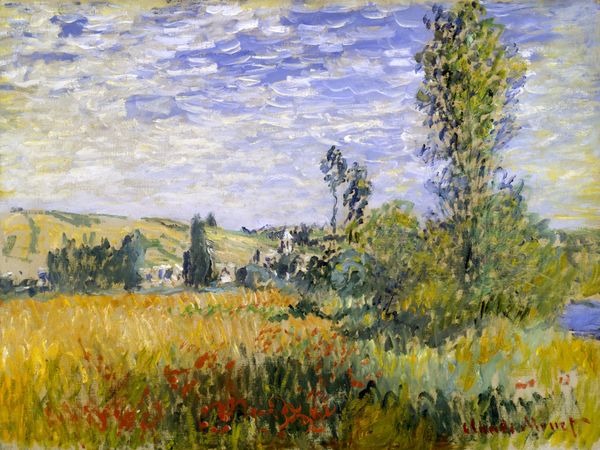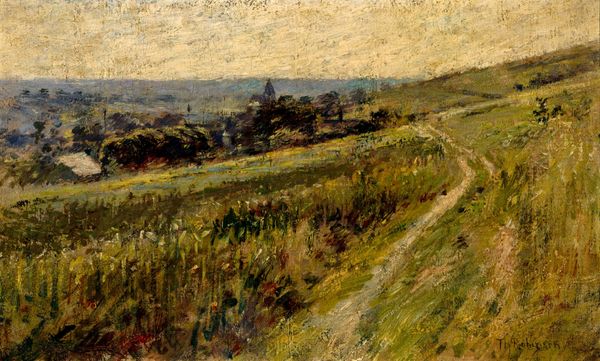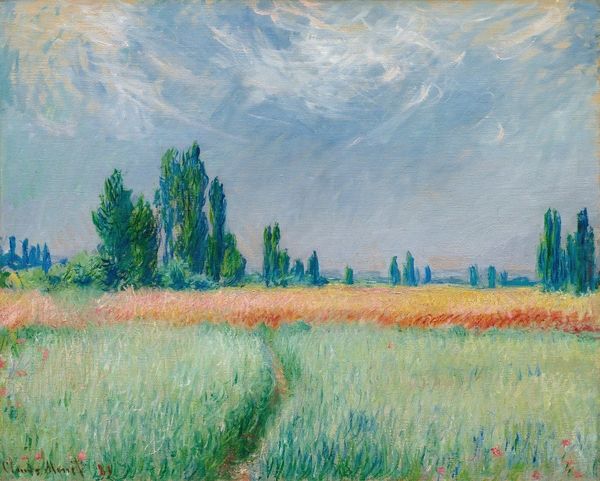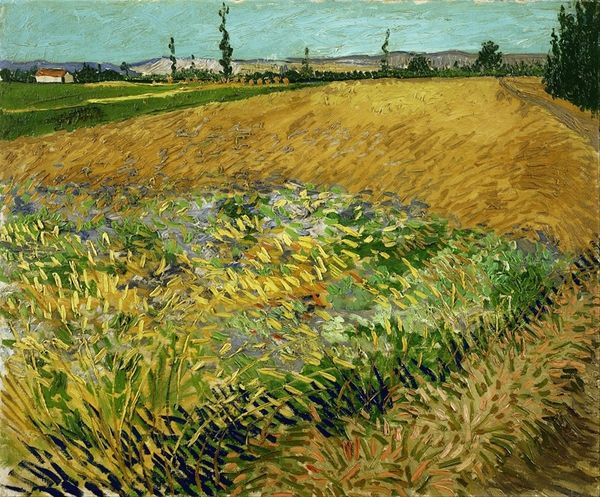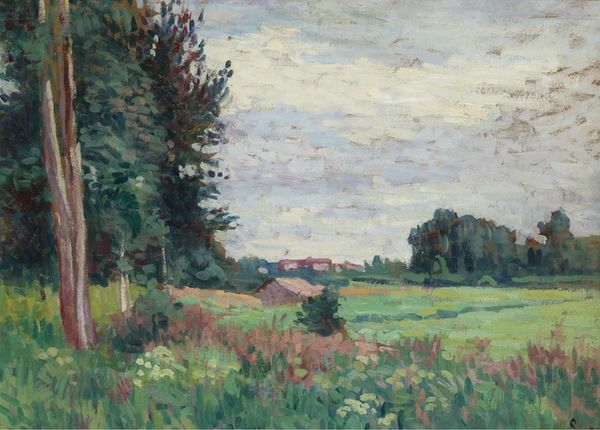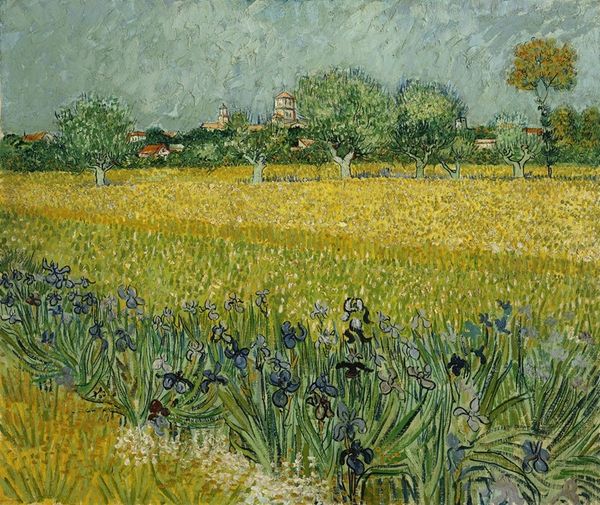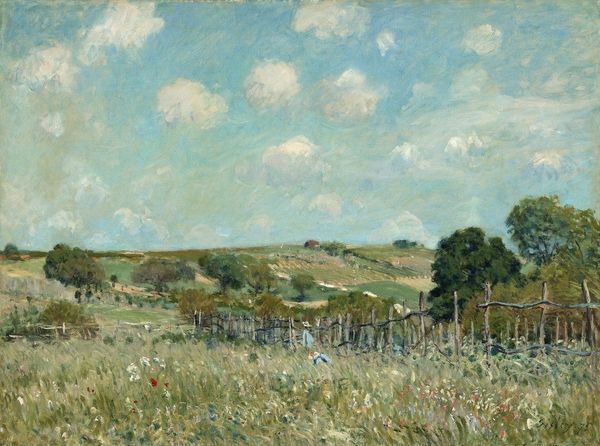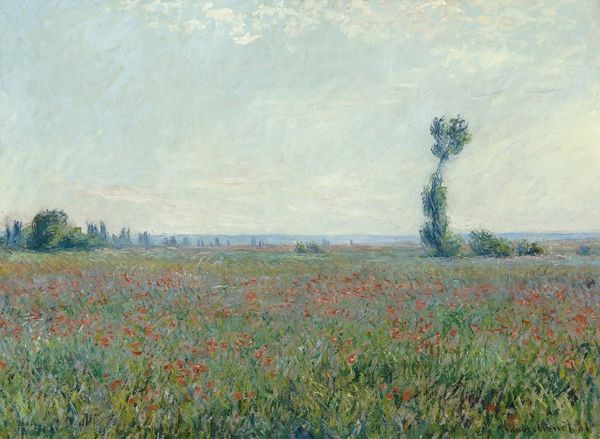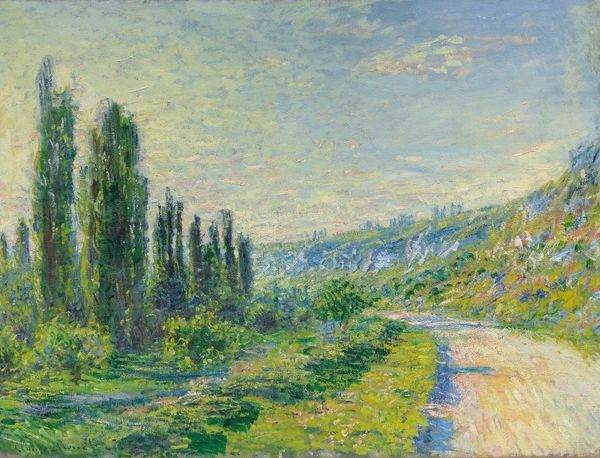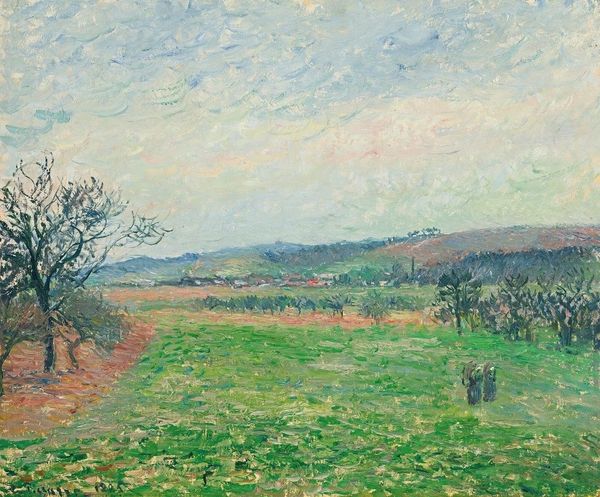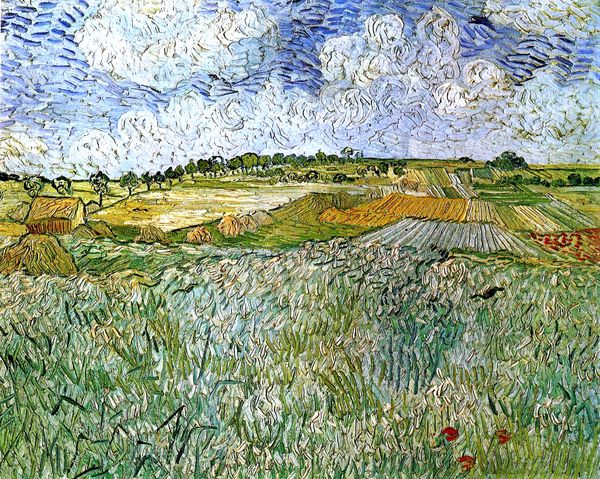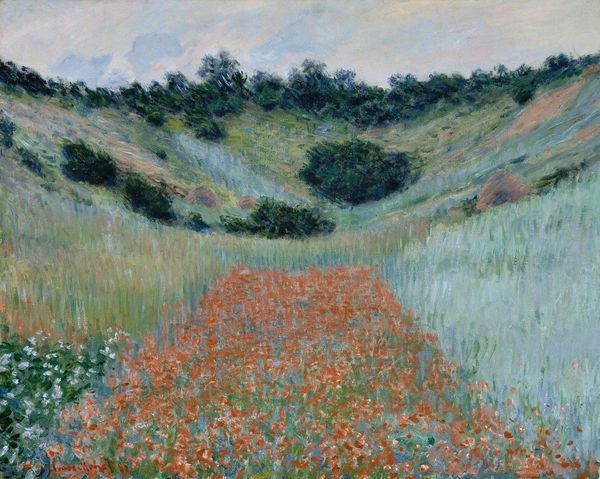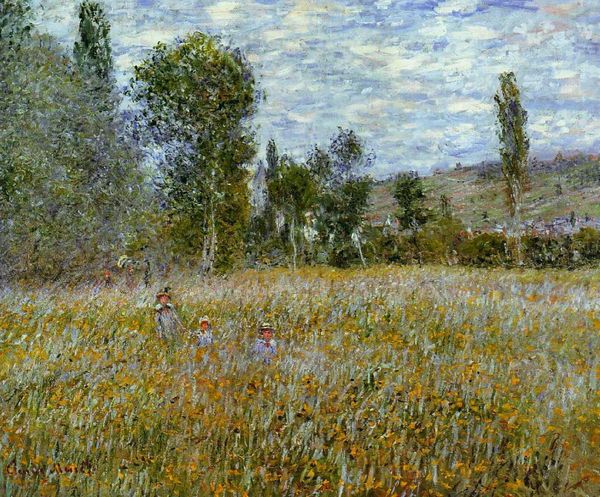
painting, plein-air, oil-paint
#
painting
#
impressionism
#
grass
#
plein-air
#
oil-paint
#
landscape
#
impressionist landscape
#
nature
#
oil painting
#
geometric
#
natural-landscape
#
men
#
naturalism
#
modernism
#
realism
Dimensions: 54.3 x 65 cm
Copyright: Public domain
Curator: This is Gustave Caillebotte's "The Plain at Gennevilliers, Group of Poplars," painted in 1883. It's an oil-on-canvas work currently held in a private collection. Editor: It feels like a world seen through gauze. Muted colours, almost a silver-grey dominating, and that diagonal path really pulls my eye into the distance. There's a sense of quiet labor in it too. Curator: Absolutely. Caillebotte painted this during a period of immense change in the Gennevilliers region, as industrialization and urbanization began to encroach on agricultural land. The peasants laboring on the field are, in my interpretation, symbols of tradition confronted with social reformation and new class emergences. Editor: I see what you mean. The figures are quite small in relation to the vastness of the landscape, as if insignificant to the progress. I wonder, were they even the artist's primary interest, or did he include them simply to add realism? How were rural populations affected by this progress? Curator: I think the tension is deliberate. Caillebotte, as a flâneur of modern life, was very attuned to those societal shifts. He portrays not a romantic idyll, but the effects of labor, and perhaps subtly highlights the displacement and pressures faced by this group that capitalism affected. Notice that his focus is more the field workers and not those new modern industries that are appearing far on the horizon line. Editor: And yet, it is an incredibly beautiful scene, not overtly critical. I find myself more drawn to the technique here – the application of paint, the shimmering effect that conjures wind moving through tall grass. Caillebotte manages to avoid idealizing labour while celebrating its relationship with nature. Curator: The location and that technique are both critical to understand. Caillebotte's unique artistic practice, the location, and of course, the moment. The fact that industrialization of labor happened and still happens affects the art sphere from a global perspective. The history and current situation of countries must be understood to understand Caillebotte. Editor: Indeed, placing "The Plain at Gennevilliers" in its context allows us to appreciate it on multiple levels – as a painting of a beautiful place, a witness to a historical transformation, and also a critical document reflecting Caillebotte's world view. Curator: For me, that interdisciplinary analysis that combines so much in this one oil canvas highlights intersectional relationships about history, sociology and cultural elements. Editor: A wonderful encapsulation of an important painting that makes me want to observe from Caillebotte’s viewpoint of societal transformations, and it certainly leaves you much to think about.
Comments
No comments
Be the first to comment and join the conversation on the ultimate creative platform.
